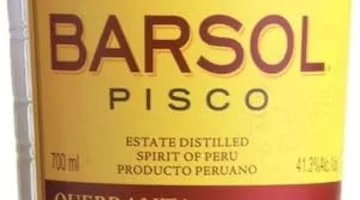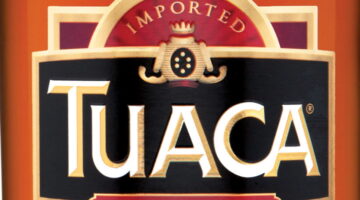What is Soju?
Travel Distilled explains what the Korean spirit soju is, what is its history, how is it made, what are the varieties of soju, and how is it served.
Nestled in the heart of Korean culture, soju is a transparent spirit that embodies centuries of tradition, social connection, and culinary versatility. This iconic Korean liquor has transcended its regional origins to become a global phenomenon, celebrated for its clean taste and adaptability in various settings.

What is Soju’s History?
The roots of soju stretch deep into the history of the Korean peninsula, where its origins can be traced back to the 13th century during the Mongol invasions. The distillation techniques were introduced by Mongol invaders, and over the centuries, soju evolved from a medicinal elixir to a popular social beverage. Originally made from rice, the spirit underwent transformations in its ingredients and distillation methods.
What is Soju’s Production Process?
Traditionally, soju was crafted from rice, mirroring Korea’s rich agricultural heritage. However, as the spirit became more accessible to the masses, variations emerged, including those made from barley, sweet potatoes, and tapioca starch. Modern soju, in particular, often incorporates a blend of grains to achieve a unique flavor profile.
The distillation process plays a pivotal role in shaping soju’s character. While earlier methods involved pot stills, the advent of industrialization saw the introduction of column stills, allowing for more efficient and consistent production. This evolution in distillation technology has contributed to the accessibility and widespread availability of soju.
Alcohol Content and Dilution

Soju is renowned for its relatively high alcohol content, typically ranging from 16% to 25% alcohol by volume (or 32-50% proof). However, what distinguishes soju from other potent spirits is its tradition of dilution. It’s common for soju to be mixed with water before consumption, adjusting the strength of the spirit and creating a more approachable drinking experience. This dilution aligns with the communal nature of soju consumption, encouraging shared moments and fostering friendship.
What is Soju’s Cultural Significance?
Soju is deeply ingrained in the social fabric of Korean culture, playing a central role in various aspects of life. It’s a staple at celebratory occasions, family gatherings, and business dinners. The act of pouring and receiving a drink during these events carries symbolic weight, reflecting hierarchies, respect, and camaraderie.
In addition to its role in formal occasions, soju is a key player in Korea’s lively nightlife. From bustling city streets to traditional drinking places called hofs, soju is a universal presence, helping connections and shared experiences among friends and strangers alike.
What are Soju’s Drinking Rituals
The act of pouring and receiving soju involves established rituals that contribute to the overall drinking experience. When receiving a glass of soju, it’s customary to hold the receiving hand with the other hand as a sign of respect. The pouring hand should be lower than the receiving hand, symbolizing deference to the person being served. These rituals not only convey cultural norms but also create a sense of harmony and interconnectedness.
Varieties of Soju

While traditional soju made from rice remains popular, there is a plethora of modern soju varieties, each distinguished by its base ingredient and flavor profile. Barley soju often has a smoother and more delicate taste, while sweet potato soju not surprisingly introduces a subtle sweetness. Some producers even experiment with fruits and herbs, resulting in flavored sojus that appeal to a broader audience.
Fusion and Innovation
As soju has gained international attention, particularly in recent years, there has been a surge in innovative soju-based products. Craft breweries and distilleries experiment with unique ingredients, barrel-aging, and flavor infusions to create soju expressions that cater to diverse palates. These innovations contribute to soju’s evolving identity, showcasing its adaptability in a globalized world.
Soju in Popular Culture
Soju has found its way into various forms of media and popular culture, further cementing its status as a symbol of Korean identity. Whether depicted in films, television dramas, or K-pop music videos, soju is often portrayed as a connector of people, fostering relationships and moments of joy. This cultural representation has played a role in introducing soju to audiences around the world.
Globalization and Soju

Made in New York
In recent years, soju has transcended its regional confines, making its mark on the global spirits scene. Korean cuisine, K-pop, and the country’s vibrant cultural exports have contributed to the international appeal of soju. As a result, soju bars, often styled after Korean hofs, have emerged in various cities worldwide, introducing diverse audiences to the charms of this Korean drink.
Culinary Versatility
Soju’s versatility extends beyond the drinking glass, finding its way into the culinary world. In addition to being a popular accompaniment to Korean barbecue, soju is increasingly used as an ingredient in cocktails and cooking. Its clean and neutral profile allows it to enhance flavors without overpowering dishes, making it a sought-after element in both traditional and fusion cuisines.
Challenges and Regulation
Despite its global popularity, soju has faced challenges in the form of regulations and trade barriers. The categorization of soju as a traditional Korean spirit with specific production standards has at times posed obstacles to its distribution in certain markets. However, these challenges have also spurred discussions about evolving regulations to accommodate the diversity within the category.
Sustainability in Soju Production
As awareness of environmental sustainability grows, some soju producers are adopting eco-friendly practices. From responsible sourcing of ingredients to energy-efficient production methods, there is a growing commitment to minimizing the ecological footprint of soju production. This shift reflects an industry-wide acknowledgment of the importance of environmental stewardship.
Conclusion
In conclusion, soju is far more than a beverage; it is a cultural ambassador that reflects the spirit of Korea. From its historical roots to its role in social rituals, soju weaves a narrative of tradition, innovation, and communal connection. As it continues to captivate global audiences, soju invites enthusiasts to explore its diverse varieties, savor its culinary versatility, and experience the warmth of Korean hospitality encapsulated within the crystal-clear elixir of soju.











